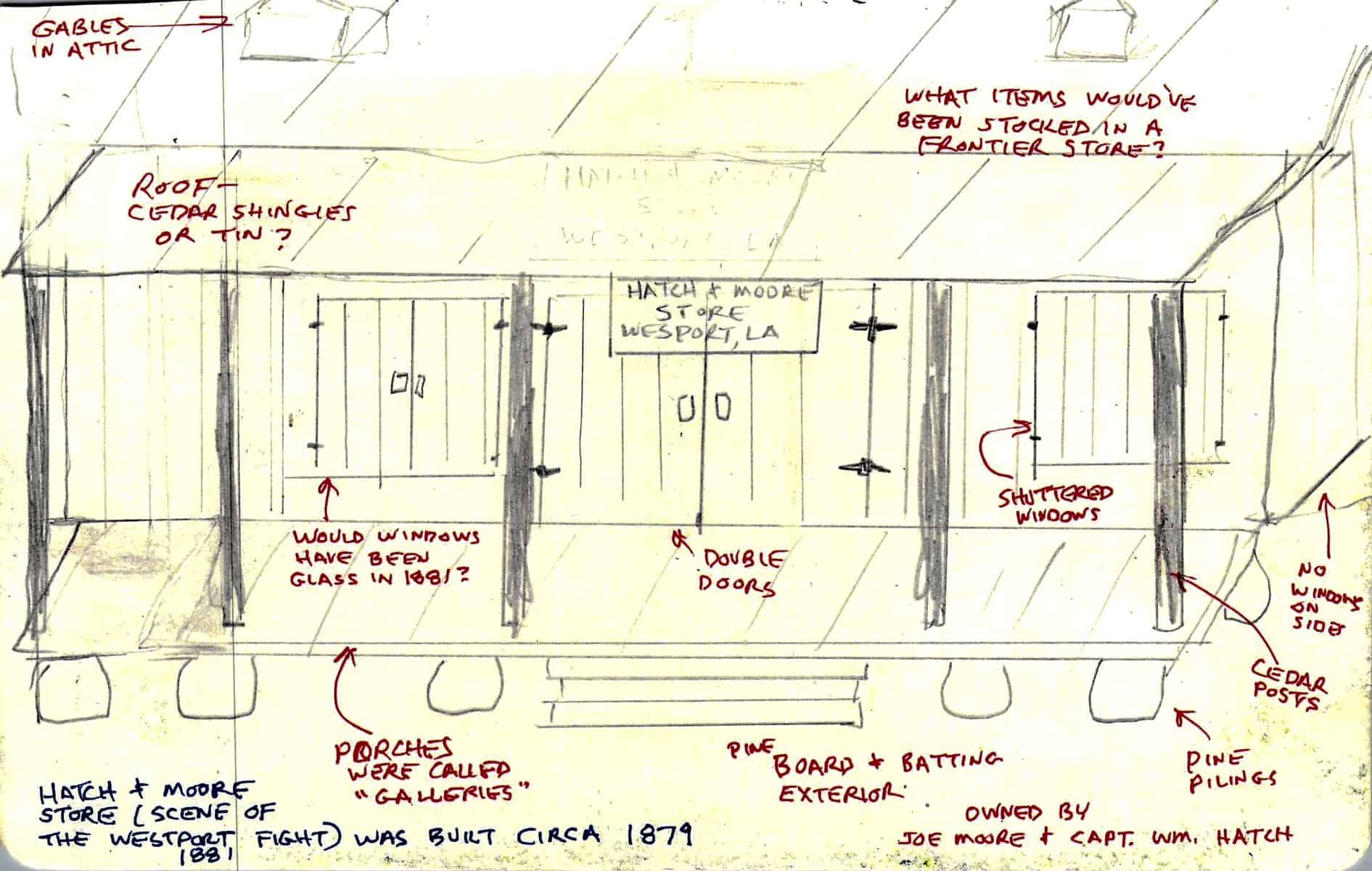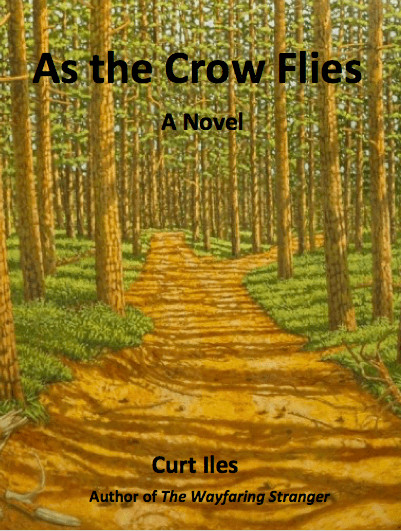Help us “build” the Westport Store

Part of the fun of writing (and reading) fiction is creating images and characters in your mind.
Our upcoming novel, As the Crow Flies, is scheduled for release on Labor Day. I’ve been living in its location for most of the past year.
The Westport Store, also known as the Hatch and Moore Store, was operated by Joseph Moore, the hero of The Wayfaring Stranger and A Good Place. The store was located in the extreme SW corner of Rapides between Glenmora and Pitkin.
On Christmas Eve, 1881, a deadly feud broke out at the store and resulted in several deaths and the eventual eviction of Outsiders from all of the nearby territory, then known as Ten Mile.
The sketch above is simply my idea of how the Westport Store looked from the front.

As the Crow Flies is narrated by Missouri Cotton, a teen girl in a family of drifters passing through Louisiana’s No Man’s Land. Here is her first description of the store:
We climbed a rise, and the store sat in a clearing in the pines.
There wasn’t anything fancy about the store. It was constructed of rough pine with sawmill slats as batting. Part of the building was two story.
As we neared, I read the sign above the porch:
Hatch and Moore Store
General Merchandise.
Westport, La.
I asked Unk. “How long has the store been here?”
“About two years.”
It was the last place it seemed like that a new store belonged. It was as if a piece of ________ of ________ had fallen out of the sky. Help me with simile, metaphor, or adage.
I need your input:
- Do you think a store built on the La.Frontier in 1879 would have had a cedar shingle or tin roof?
- As I tell the story, much of the shooting is done from the windows on the front porch. (They are shuttered in the sketch). Would you have glass windows?
- The Westport Store was in the midst of the vast Longleaf Pineywoods forest, so it makes sense that it was constructed from pine. What would you suggest on the siding?
- Cedar posts were usually used for columns on porches. What items would be hanging on the posts?
- Long porches were known as galleries. What size and thickness of wood would you floor it with.
- Any ideas on the steps.
- How high off the ground would a house on pier be circa the late 19th century?
- The store had an attic. This is where Moon Perkins was placed as the fight broke out. I put the gable where he could see out and plot his escape.
Sidenotes: I’ve planned the store with no side windows and only a single wooden back door on a small gallery.
Trivia: A battered American flag flew from a skinned pine pole beside the pole? How many stars were in it on the day of the Fight.
This is Missouri’s first inside view of the store:
The store had three wide aisles and long rough wood shelves running the length of the building. The walls were covered with all kinds of implements, tools, rolls of wire, and pots and pans. There was a wide front double door and a small windowless back door. Anytime I was on a mission for Pap I noticed things like this. There was old cash register on a table to the left of the entrance. It smelled like a general store: I caught a whiff of horse feed, liniment, coffee, and tobacco.
I wandered the well-stocked shelves, absorbed with rolls of dress fabric stacked along the wall.
Stocking the store:
- What ladies items would a frontier store stock?
- It’s nearly Christmas and few settlers have much cash. What would you stock for Christmas gifts?
- What type of guns and ammunition would’ve have been sold here in 1881?
- The Ten Mile country was horse and cattle country. What livestock items would’ve have been sold.
- Missouri is 16. What do you think she’d see there that she must have for Christmas?
- What do you think would’ve been hung on the walls? On the shelves? Answer below.
-
Post Contact Form
This goes at the bottom of some posts

 Creekbank Stories Curt Iles, Storyteller
Creekbank Stories Curt Iles, Storyteller
